Egg boiled calories in 1 pc. Egg calorie content and useful properties of the product.
Just a decade ago, eggs were considered unhealthy foods that were allowed to be consumed no more than once a week. Now the views have completely changed and the allowed number of eggs per week has increased significantly.
The egg is the foundation of life. The substances contained in it are almost completely absorbed by the body. So one egg a day can satisfy the body's need for proteins, vitamins and trace elements. It contains essential amino acids, macro and microelements - calcium, potassium, phosphorus, magnesium, sodium, chlorine, sulfur, iron, zinc, iodine, copper, manganese, chromium, fluorine, molybdenum, boron, kolbalt. Eggs are rich in vitamin B (B1, B2, B3, B6, B9, B12), they also contain vitamin E, C, D, A, H, PP, K.
Eggs strengthen vision, are natural antioxidants, improve the function of the cardiovascular system, strengthen hair, teeth and skin, bones; help in the prevention of eye diseases; reduce the risk of breast cancer in women by a quarter. And among other things, it is also a very useful dietary product that contains a minimum amount of calories, satisfying and nutritious, which is used in many diets. Well, the cholesterol contained in them will not harm your health if you eat no more than one or two eggs a day.
The weight of one egg ranges from 45 to 65 g, and the share of the shell accounts for 10% of the weight. In this way, the calorie content of one peeled egg will average from 60 to 80 calories. The calorie content of eggs practically does not depend on the method of preparation /boiled, soft-boiled, hard-boiled/. However, the calorie content of the oil used should be added to the calorie content of the fried egg.
Table of caloric content and nutritional value of chicken eggs.
| The product's name | Number of grams of the product | Contains |
| calorie peeled egg | 100g | 157 kcal |
| one average egg | 50 grams | 75 kcal |
| proteins | 100g | 12.7 gr. |
| fat | 100g | 11.5 gr. |
| carbohydrates | 100g | 0.7 gr. |
| dietary fiber | 100g | 0 gr. |
| water | 100g | 74.1 gr. |
100 grams contain the following micro and macro elements: Iron 2.5 mg, Zinc 1.11 mg, Iodine 20 mcg, Copper 83 mcg, Manganese 0.029 mg, Selenium 31.7 mcg, Chromium 4 mcg, Fluorine 55 mcg, Molybdenum 6 mcg, Cobalt 10 mcg, Calcium 55 mg, Magnesium 12mg, Sodium 134mg, Potassium 140mg, Phosphorus 192mg, Chlorine 156mg, Sulfur 176mg
Article content:
What is the total energy value of a chicken egg. Differences in the calorie content of a product prepared in different ways.
A chicken egg is a popular product that has become an invariable part of the diet for millions of people. Many of us cannot imagine breakfast without a boiled egg or fried eggs with bacon. Another plus in favor of the product is its availability and availability in every grocery store.
When organizing a diet, it is important to know a number of points: what is the use of an egg, the calorie content of the product in boiled, raw and fried form, cooking features and other nuances.
total calories
The first thing worth noting in the notebook is the calorie content of one egg. This parameter is equal to 157 kcal / 100 grams.
At the same time, the weight of the product depends on the breed of chicken, and the color is in no way related to the set of vitamins or the number of calories. So, in Russia and the United States, the eggs are mostly light beige or white. Average weight — 40-70 grams. Therefore, the indicator under consideration should be considered taking into account the mass.
What's in the composition?
When forming a diet, it is necessary to take into account the calorie content of eggs and their healing properties. It is no secret that the product consists of two components - the yolk and protein. So, in the protein there is only 10 percent pure protein. Everything else is water. As for the yolk, it also has two components - cholesterol and fat.
The total mass of the product is formed as follows:
- yolk - 32%;
- protein - 56%;
- shell - 12%.
Eggs contain 12 key vitamins. The product is considered one of the main sources of vitamin A. As for the content of vitamin D, the egg is in second place after fish oil. Also in the composition there was a place for representatives of group B, tocopherol and choline.
The calorie content of the product is largely due to the large amount of fat in the yolk. At the same time, they are presented in two versions - mono- and polyunsaturated. There are also saturated (harmful), but in small quantities.
The "fat" composition is as follows:
- Polyunsaturated fats- linoleic and linolenic acids (16% and 2%, respectively).
- Monosaturated- oleic and palmitoleic acids (47% and 5%, respectively).
- Saturated- palmitic, stearic and myristic acids (23%, 4% and 1%, respectively).
Also in the egg there was a place for minerals containing the following elements:
- calcium;
- iron;
- cobalt;
- copper;
- phosphorus.
Calorie in boiled form
It is most useful to drink raw eggs, if not for one "but". There are always risks that there will be salmonellosis dangerous to health in the composition. So for safety, the product is better to weld.
What is the calorie content of 1 boiled egg? Here it is worth remembering that this element of the diet consists of two components - yolk and protein, the number of calories of each of which differs ( 9 and 4 respectively). Wherein total number kcal in an egg (regardless of whether it is boiled or not) remains the same - on average 60-80.
If we consider the components, then the following “picture” is formed here:
- The protein of a boiled egg supplies the body with a small portion - 17-20 kcal, what is 25-30% total calorie content of the cooked product. At the same time, the plus of the protein part is the absence of fats and the intake of amino acids necessary for a person (as well as B vitamins).
- The yolk is a source of cholesterol, the harm of which is covered by the presence of lecithin in the composition.
Calories in hard-boiled or soft-boiled eggs
The energy value of a hard boiled chicken egg is below - 45-50 kcal. Nutritionists claim that this method of cooking is most effective for people who are on a diet. The shelf life of the finished product is 8-10 days (at the same time, you don’t have to worry that it will deteriorate). Despite this feature, it is still recommended to take the finished dish immediately after cooking.
As for the “soft-boiled” cooking method, here the calorie content of one egg remains unchanged - 60-80 kcal. In this case, the stomach for digestion will take 2-3 hours. The duration of cooking this dish is 3-5 minutes. The longer the process, the worse the digestibility.

Energy value of fried egg
Many people love to fry eggs without thinking about the calorie content. Here, this figure (due to oil) is higher and is from 170 calories. On average, the parameter in a fried egg is 2-3 times greater than in a raw one. For this reason, this cooking option is not recommended when following a diet and clinical nutrition.
Results
Considering the calories in 1 boiled egg (raw, fried, soft-boiled, and so on), it is easiest to form a diet and provide the following benefits for the body:
- protect the optic nerves and eliminate the risk of cataracts;
- ensure the normal process of hematopoiesis;
- raise mental capacity, strengthen memory;
- stimulate the immune system, accelerate the process of losing weight;
- improve the health of bones and teeth;
- rejuvenate the body.
Remember that if you add eggs to the diet, then it is better to cook them all the same.
Eggs are among the most nutritious and healthy foods in the diet. At the same time, they can be the main component of the mass of salads, pastries, confectionery or an independent dish. They are highly nutritious and include a large number of vitamins and minerals needed for normal operation human body. The energy value of an egg will depend on various parameters - fried, boiled or raw this product.
A boiled egg contains 80 kcal, but before you completely exclude this product from your diet, you need to know about its benefits to the body. The composition of eggs includes such useful substances:
- Zinc helps to strengthen the immune system
- Vitamin E is a powerful antioxidant that reliably protects human body from various kinds cancer
- Vitamin D helps strengthen teeth and bones
- Vitamin B12 protects the heart muscle
- Vitamin A prevents the onset of cancer and helps slow down the aging process
- Riboflavin Supports Tissue Health
- Protein promotes health and strength
- Omega-3 Fatty Acids Help Lower Bad Cholesterol
- Niacin normalizes functioning nervous system
- Zeaxatin and lutein improve vision
- Folic acid stimulates red blood cells
- Choline activates the brain
What are the calories in fried eggs?
Unlike boiled, fried product is more high-calorie. This is directly related to the fact that in the process of cooking eggs, fat (butter or vegetable) will be taken. Any type of oil contains a large number of calories. The main record holder in terms of calorie content was vegetable oil (this also includes olive oil). In total, 100 g of oil contains approximately 900 kcal.
Fried eggs contain approximately 240 kcal per 100 g. Most people use cheese, flour, cream, milk when preparing an omelet, as a result of which the calorie content of the finished dish increases significantly and can reach 350 Kcal. The fried product contains calories that will be superfluous regardless of the nutrition system that a person adheres to.
The benefits of eggs are undeniable. Chicken egg contains 12 vitamins. It is inferior in vitamin D content only to fish oil, is good source active vitamin A. It contains a lot of B vitamins, beauty vitamin E, and also in the yolk there is a large amount of an important vitamin - choline. This product contains 96% minerals, including calcium, phosphorus, iron, iodine, copper. The egg is absorbed by the body almost 100%.
Benefits of boiled eggs
As for the chemical composition of this product, it is first of all worth highlighting the amino acids that are contained in the egg white and are not synthesized by the body on their own. Moreover, it is in the egg that their balance is most ideal in comparison with other products, and therefore all of them, when studied, are compared precisely with the egg. Among the most important here, it will not be superfluous to note tryptophan, methionine and lysine, whose deficiency can lead not only to the cessation of the creation of proteins in the body, because of which they begin to be taken from the internal organs and blood, but even to fatty degeneration of the liver. And for the time when the body is still being formed, the lack of protein is reflected in the mental and physical development. Therefore, even despite the calorie content of a boiled egg, 1 or 2 must be present in the diet of a child and a teenager. Moreover, often at this age the metabolism is still active enough not to worry about overweight. By the way, with regards to the maximum assimilation and replenishment of egg protein, nutritionists recommend creating a potato tandem for him. Undoubtedly, boiled or baked: fried will only increase the blow to the pancreas. 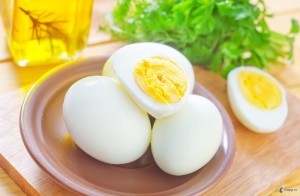
The remaining important vitamins and minerals, as well as the largest fat part, belong to the yolk. It is for this reason that it is a rather controversial element of the entire product. On the one hand, in a boiled chicken egg, the calorie content is determined precisely by the yolk, as well as the percentage of fats, but on the other hand, it contains a large proportion of useful substances. There is a very high dose of one of the B vitamins - choline, which should lower cholesterol levels and prevent plaques on the walls of blood vessels. For this reason, moderate use boiled eggs calories and negative points life will not overshadow its composition. In addition, there is a decent content of biotin, which is required for carbohydrate and fat metabolism, vitamin A, which works as a natural antioxidant that has a beneficial effect on vision, the condition of the skin and bone tissue, and also contributes to the best absorption of some of the amino acids found in egg white . This is how the balance of elements in this product is achieved.
In addition, 1 boiled egg with a calorie content of less than 100 kcal also contains folic acid (B9), vitamins D, PP and E. From trace elements special meaning have iodine, copper, selenium, fluorine, cobalt, sulfur, chlorine, phosphorus, potassium, sodium, magnesium and calcium. And omega-3 polyunsaturated fatty acids deserve special mention, for which many people drink fish oil when you can simply include fish or eggs in your diet. This element is necessary for stress, because it lowers the production of cortisol, promotes muscle recovery, and therefore is especially actively used in sports nutrition, in addition, tidies up blood pressure, thinning the blood. The daily requirement of Omega-3 is achieved by eating five medium eggs or one hundred grams of salmon.
What determines the calorie content of an egg
Calorie content directly depends on the size of the eggs, one hundred grams of the product contains 158 kilocalories. One medium raw egg contains 70 kilocalories. In a large egg - 80 kilocalories, and in a very large one - 90 kilocalories. The calorie content of cooked eggs is different. In a fried egg - 125 kilocalories, assuming that it is cooked in vegetable oil. The calorie content of a hard-boiled egg is 50 kilocalories, and a soft-boiled egg is 70 kcal. The yolk contains three times more calories than the protein. The calorie content of a quail egg (this product is becoming quite popular and often sold in supermarkets) is 16-17 kilocalories. Its mass is about 10 - 12 grams.
How many calories are in a boiled egg?
A boiled egg contains 80 kcal, but before you completely exclude this product from your diet, you need to know about its benefits to the body. The composition of eggs includes such useful substances: 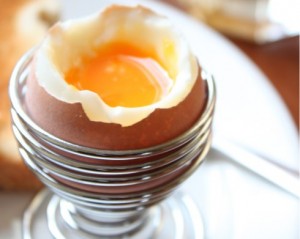
- Zinc helps to strengthen the immune system
- Vitamin E is a powerful antioxidant that reliably protects the human body from various types of cancer.
- Vitamin D helps strengthen teeth and bones
- Vitamin B12 protects the heart muscle
- Vitamin A prevents the onset of cancer and helps slow down the aging process
- Riboflavin Supports Tissue Health
- Protein promotes health and strength
- Omega-3 Fatty Acids Help Lower Bad Cholesterol
- Niacin normalizes the functioning of the nervous system
- Zeaxatin and lutein improve vision
- Folic acid stimulates red blood cells
- Choline activates the brain
Calorie in boiled form
Raw eggs are most beneficial, but there is no guarantee that they are free of salmonellosis.
Therefore, it is better to cook this product. Everyone knows that an egg consists of protein and yolk. The calorie content of each part is different. The largest number calories are contained in the yolk, and in the protein they are three times less.
Surprisingly, there are as many kilocalories in a boiled egg as in a raw one. That is, it will contain 70 kcal.
This is a great option for breakfast, and besides, scientists have proven that the cholesterol that they have is harmless.
protein calories?
The protein of a boiled chicken egg has a low calorie content and is only 17 kcal, which is about a quarter of the total calorie content. It is also important that the protein contains practically no fats and contains all the amino acids necessary for the human body, as well as B vitamins.
Yolk calories?
The calorie content of the yolk is about 50 - 55 Kcal. It contains fats, proteins, carbohydrates, vitamins A, E, group B and trace elements: manganese, iron, calcium, zinc and others.
What type of egg is the healthiest and lowest calorie?
- Fried eggs are considered the most high-calorie and less useful, in a fried egg 125 kcal, provided that it was fried in vegetable oil. Most of the calories are in the yolk, while in the protein they are three times less. 100 grams of fried eggs contain 358 kcal, while fried egg contains only 50 kcal. The yolk contains 2 grams of carbohydrates, 17 grams of protein and 30 grams of fat. The protein contains more proteins and no fats at all.
- One raw egg has an average of 80 kcal, but it is not recommended to eat them because of the possibility of getting sick with salmonellosis.
- Such egg dish like an omelette, provided that it is prepared from two eggs, it contains approximately 120 kcal, and if it is prepared from proteins alone, then 85 kcal. Quite hearty and healthy dishes, besides, you can add other products to it.
- We have already mentioned the benefits of boiled eggs, but they are also divided in turn. The lowest calorie content of an egg boiled in a soft boil is only 50-60 kcal, provided that the egg is store-bought, if the egg is rustic, then the calorie content can be up to 70 kcal. It turns out that soft-boiled eggs lead our list as the lowest-calorie and healthiest option for cooking eggs.
Quantitative rate of eggs
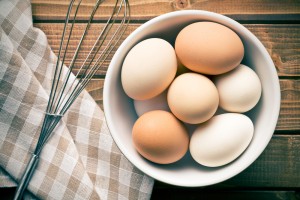 According to generally accepted nutritional standards, the average person needs to eat 300 eggs a year. People who suffer from high levels of cholesterol in the blood are recommended to eat 2-3 eggs per week, the rest can eat 5-6 eggs.
According to generally accepted nutritional standards, the average person needs to eat 300 eggs a year. People who suffer from high levels of cholesterol in the blood are recommended to eat 2-3 eggs per week, the rest can eat 5-6 eggs.
Young children are introduced to the yolk from the age of seven months.
A child of 2-3 years old can eat from 2 to 3 yolks per week, a child of 4-6 years old is recommended to eat 3 eggs per week.
When compiling your menu, it is worth considering that eggs are found in many products: mayonnaise, pastries and others.
How long to boil hard boiled eggs
First of all, you need to pour cold water into a small saucepan so that the water exceeds the eggs by 1 cm. Then quickly, but carefully, using a tablespoon, lower the eggs into the water one at a time. It is better to start boiling eggs in cold water, so there will be fewer bursting eggs. And it is better to salt the water, then the eggs will not burst at all.
Then turn on the timer and cook the eggs until the water boils over high heat, after the water boils, reduce the fire and leave the eggs to cook for another 7-8 minutes. If you put the eggs in already boiling water, then be sure to salt the water and cook the eggs for 8-9 minutes. With this method, the yolk will be exactly in the middle of the egg and the sliced egg will look evener.
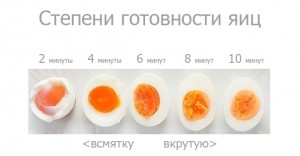
Do not boil eggs for more than 10 minutes. The yolk becomes greenish, the proteins of the egg emit a foul-smelling gas - hydrogen sulfide.
Boiled egg in the diet of those who follow the figure
As it became clear after finding out how many calories are in a boiled egg, you can include it in the menu if you want to maintain your current weight or lose extra pounds, but you should do it wisely. Given the risks of increasing cholesterol levels and not the lowest calorie content, a boiled egg in the amount of one per day, of course, will not cause harm, but heels are clearly not the best way will affect the weight. Zharka, of course, has to say her uncompromising "no". But as for the combination with other products, there is something to talk about.
Despite the fact that to increase the protein value, nutritionists advise adding potatoes to a boiled chicken egg, the calorie content of such a union, alas, will please few people. In addition, their joint assimilation is an order of magnitude more difficult than single assimilation. The situation can be corrected by greens and fresh vegetables - in particular cucumbers or tomatoes. But still, if the choice is made in favor of such a tandem, mindful of the number of calories in a boiled egg and potatoes, as well as their severity for the digestive tract, it is recommended to use it in the morning, before lunch, inclusive. 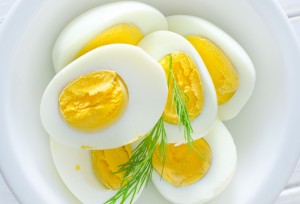
Another important point, which many people forget about and which affects more strongly not the figure, but health, is the shelf life of eggs as such. Moreover, not only raw, but also boiled. If cooked soft-boiled is desirable to eat immediately, then hard-boiled can be stored for up to three to four hours. This time is usually enough both for him alone and in a salad, sandwich or soup. After the expiration of the specified period, the assimilation of valuable substances, as well as the processing of the product by the body, become more complicated.
egg recipes
Eggs can be used in different form. Hard-boiled eggs are used in the diet, as this is the lowest calorie product. There are several popular and delicious meals from this product.
- Hard Boiled Eggs - Boil the eggs for 7 to 8 minutes. Boiled Eggs - Boil the eggs for 2-3 minutes.
- Fried eggs - fry the egg in a pan, in a small amount of vegetable oil, add salt, black pepper to taste. You can not turn the egg over - you will get a wonderful fried egg, you can turn it over and fry it on both sides, or you can shake it in a frying pan, then you will learn how to scrambled eggs - talker.
- Omelet is a popular, easy-to-cook dish. To prepare it, beat eggs with milk, add salt and pepper and fry in a pan. You can add ham, tomatoes, fresh bell peppers, sausages and even cheese to the omelet. It all depends on your imagination.
- Poached eggs are eggs boiled in water without shells. This is an original French dish that many people like.
Who better to give up eggs
Eggs are contraindicated if you have allergies, cholecystitis, or an intolerance to any component of the protein or yolk. Egg yolks are allowed to be consumed even by infants from the age of seven months.
An egg is such a versatile product that you can use it to cook a lot of interesting, tasty and healthy meals. So eggs must be present in your diet.
Chicken egg is recognized as one of the most nutritious and healthy foods. It is a component of a classic breakfast, holiday salad, delicious pastries. The egg contains a significant amount of useful components that are found in other products in a smaller ratio. Their use can be of great benefit to the body, but for this you need to know egg calorie content, the content of BJU, trace elements and in what quantities the product is harmful.
Energy value of eggs
The calorie content of a chicken egg, like other products, depends directly on the size and method of heat treatment. 100 grams of raw product contains 156 calories. The weight of one egg with a shell is from 40 to 75 g, so the energy value of one unit varies from 62 to 115 calories.
Despite the fact that the greatest benefit comes from the use fresh product, it is not recommended to eat it raw due to the fact that a chicken egg can be infected with salmonella.
The calorie content of a boiled egg practically does not differ from a product that has not been subjected to heat treatment. 100 g of boiled eggs, cooked soft-boiled or hard-boiled, contain all the same 156 calories. Accordingly, the calorie content of a boiled egg ranges from 62 to 115 calories, depending on its size.
The energy value of egg white and yolk is different, with the latter having almost three times higher values. Protein consists of 85% water, 12.7% protein, 0.3% fat and 0.7% carbohydrate. 100 g of protein contains only 50 calories, so the product is indispensable in dietary and sports nutrition. If you take a medium-sized chicken egg, the proportion of protein in it will be approximately 30 g. After simple arithmetic, you can determine that the protein calorie content from one boiled egg is 15 calories.
The yolk is three times more nutritious than the protein, in 100 g - 352 calories. This figure is due to the high fat content - 12%. The weight of one yolk of a boiled egg is 15-20 g, and its calorie content is 62-65 kcal.
The energy value of a fried egg exceeds the calorie content of a boiled egg. This method of cooking involves the addition of oil, which automatically increases the energy value of the dish. In one fried egg from 110 to 120 kcal.
6 reasons to eat eggs
Chicken eggs are not only a dietary product, but also extremely useful. Nutritionists recommend that an adult eat one egg daily. For people who have elevated level cholesterol, the amount is limited to 3-4 pieces per week.
High nutritional value
The egg is not in vain considered one of the healthiest foods on the planet. It contains all the necessary nutritional components for the birth of a chicken. In addition to 80 calories, 6 g of easily digestible protein and 5 g of healthy fats, one chicken egg medium size contains:
- vitamin A - 5% daily allowance;
- vitamin B5 - 6.5%;
- vitamin B2 - 16%;
- vitamin B12 - 8.5%;
- phosphorus - 10%;
- folic acid - 6%;
- selenium - 21% of the daily requirement.
The nutritional composition is represented by more than 10 vitamins and almost the entire periodic table. The product is especially rich in vitamins A, E, K, B6, D, calcium, zinc, potassium, magnesium.
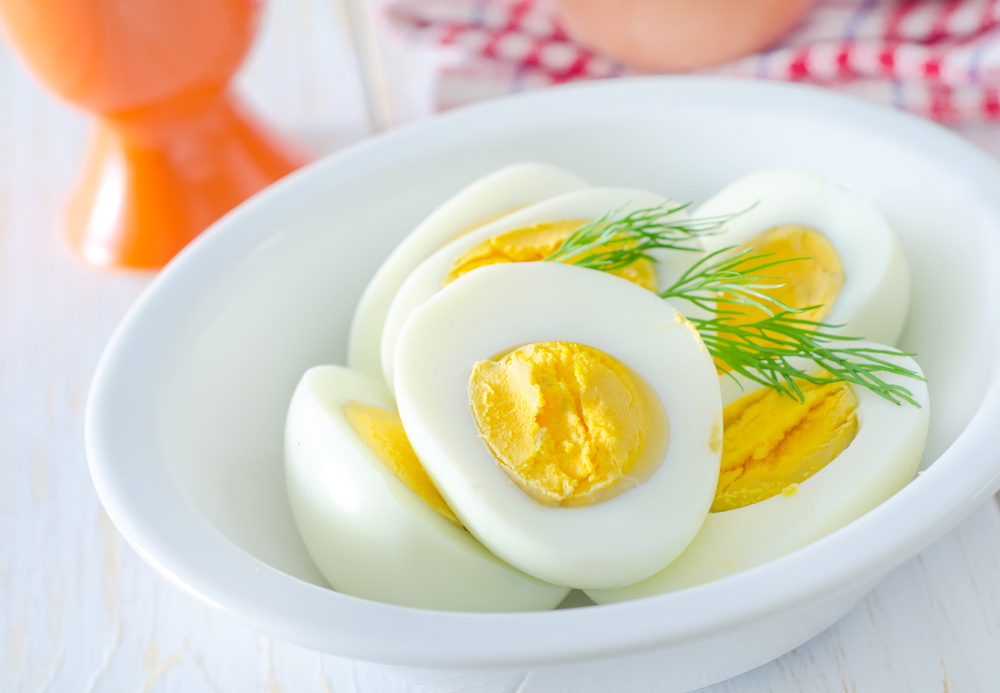
Choline is a nutrient that is also called vitamin B4. It performs many functions in the body: it ensures the safety of cell membranes, neutralizes cholesterol plaques, lowers blood cholesterol, affects the functioning of the nervous system, stimulates the production of hormones that have a beneficial effect on the brain, and also affects the reproductive system, increasing activity. spermatozoa.
One egg contains about 110-125 mg of this vitamin-like substance. According to research, 90% of people get less choline than recommended.
Benefits for the eyes
One of the age-related trends is the deterioration of vision. Certain nutrients can counteract this process and affect the function of the organs of vision. Two of them are the powerful antioxidants lutein and zeaxanthin, which tend to accumulate in the retina. A number of studies confirm that regular consumption of these antioxidants can reduce the risk of developing cataracts. Egg yolk is rich in both lutein and zeaxanthin. If you eat 1.5 yolks daily, then after a month the content of lutein in the blood will increase by 50%, and zeaxanthin by 110%. Speaking about the benefits of egg yolks for the eyes, one cannot fail to mention the high content of vitamin A. But the deficiency of this particular nutrient is one of the most common causes of blindness.
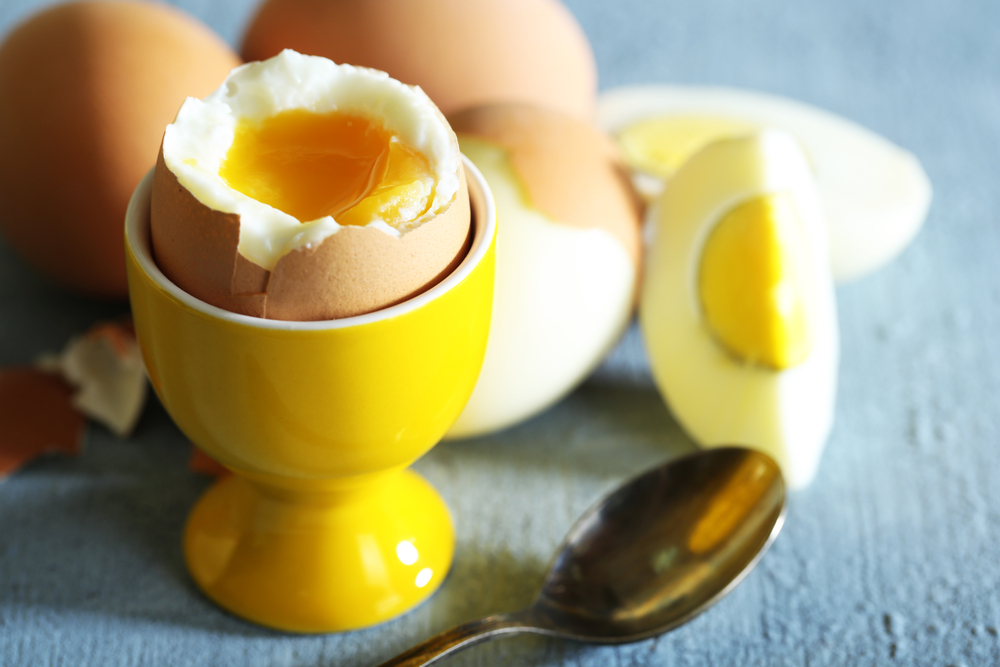
Egg yolk has a high content of fats, which are represented by such fatty acids: linolenic, linoleic acids, oleic. The ratio of fatty acids is predetermined by the feed fed to the hens. These components reduce the level of triglycerides, thereby preventing the development of diseases of the cardiac and vascular systems.
Cholesterol Reduction
The cholesterol content of egg yolk is the subject of ongoing medical controversy. In one yolk, the share of cholesterol is about 200 mg, which corresponds to half the daily requirement of a person. However, many scholars believe that the use egg yolk does not provoke an increase in cholesterol levels, since in this case the liver reduces the production of the substance and the balance is not disturbed. In addition, the product contributes to the production of "good cholesterol", due to the content of lecithin, which eliminates the effect of "bad" and reduces the risk of many diseases.
Benefits for weight loss
It is rare that a diet marathon is not complete without such a useful and low-calorie product. Exists whole line diets in which the egg is the main ingredient of the menu. Egg white has a high nutritional value and good digestibility. It is absorbed by the body by almost 95%. Protein is the main building material. Its deficiency during diets leads to a decrease muscle mass. A constant plus is the feeling of satiety that appears after eating egg dishes.
No matter how useful the product is, it should not be abused. Nutritionists do not recommend eating more than 3 eggs a day, so as not to provoke the appearance of allergic reactions and a jump in cholesterol levels.
- Burns, Robert - short biography
- The concept of common vocabulary and vocabulary of limited use
- Nancy Drew: The Captive Curse Walkthrough Nancy Drew Curse of Blackmoore Manor Walkthrough
- Deadpool - Troubleshooting
- Won't start How to Survive?
- What to do if bioshock infinite won't start
- Walkthrough Nancy Drew: Alibi in Ashes
- Spec Ops: The Line - game review, review Spec ops the line crashes on missions
- Room escape level 1 walkthrough
- Processing tomatoes with boric acid How much will 2 grams of boric acid
- Cucumber Grass (Borago)
- Bioinsecticide Lepidocid: purpose, properties and application procedure Lepidocide waiting period
- How to change the language to Russian in steam
- Dendrobium noble: room care
- Morphology of plants general concepts - document
- Planting, propagation and care of bamboo at home, photo Growing bamboo from seeds
- How to strengthen the cellular signal for the Internet in the country
- Sanskrit reveals the forgotten meaning of Russian words (2 photos)
- The oldest language Sanskrit programming language of the future Dead language Sanskrit
- Who has dominion over all the earth?










